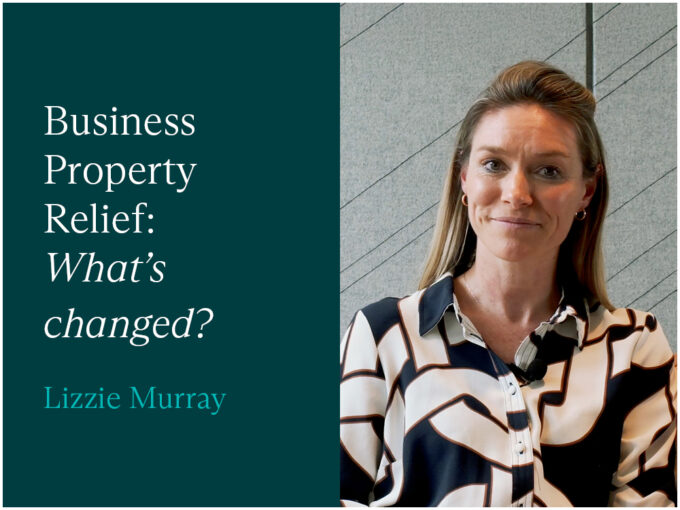National Insurance Cuts
Hot on the heels of the Autumn Budget cut to the main rate of National Insurance Contributions (NIC) for workers from April 2024, a further cut has now also been announced.
The main rate of employee NIC will therefore in total fall from the initially planned 12% to 8% from April 2024. For self-employed workers the additional reduction was a further 2%, so bringing the main rate of Class 4 NIC down to 6%. For earnings/profits over £50,270 the 2% rate remains unchanged.
Employer NIC rates remain unchanged at 13.8% and so the difference between the total NIC paid for employment as opposed to self-employment remains essentially the same.
Despite previous announcements that the Class 2 NIC flat rate paid by self-employed workers would be abolished from April 2024, this has remained in place partly due to complexities in how state pension entitlement is earned by self-employed workers. There was an announcement that further consultation would now take place with a view to this occurring at some unspecified point in the future.
For an employee earning £25,000 a year, the overall employee NIC cuts solely from the main rate changes would be £497 a year, while for employees earning over £50,270 this would equate to a reduction of £1,508 based on 2024/25 thresholds. However, the overall impact is more complex once the freeze on both NIC and income tax thresholds is also taken into account in what is a relatively high inflation environment.
For employee shareholders who earn over £50,000 the difference between additional bonuses or dividends remains the same. However, for those who are not salaried and have a choice as to how they withdraw money from their company, the gap between dividends and salary will narrow sufficiently to stop this being an automatic choice and also, probably unintentionally, potentially reduce the impact of IR35 on personal service companies.
Changes to the capital gains tax (CGT) rate applied to UK residential property disposals
Currently the main rate of CGT applied to capital disposals is 20% or 10% if the gain falls within an individual’s basic rate band. Specific legislation applies higher rates of CGT at 28% (or 18% within the basic rate band) to disposals of residential property. It was announced in the Budget that this higher CGT rate on the disposal of residential property will be reduced to 24% from 6 April 2024. This lower rate will not apply to carried interest gains that will continue to be taxed at a main rate of 28%.
The reduction in rate will generally apply to the disposal of investment properties or second homes, as specific relief from CGT is usually available on the sale of an individual’s main home. No reduction is applied to gains within the basic rate, which will still be taxed at 18%.
Abolition of Furnished Holiday Lets (FHL)
There are currently special tax rules for properties that qualify as FHLs. While the conditions are complex these provisions generally apply to furnished properties that are let on a series of short-term commercial rentals. These rules allow the owners to utilise various CGT reliefs as if this were a trading business on disposal, claim capital allowances on certain items (furniture for example), operate preferential mortgage interest deductions, and the profits count as earnings for pension purposes.
The government announced that they will abolish the FHL regime from April 2025 so they will be taxed in the same way as residential properties with long-term tenants. The government has also confirmed that anti-forestalling rules will be applied from the date of the Budget. These anti-forestalling rules block methods that obtain CGT relief under the current FHL rules by utilising unconditional contracts ahead of the changes being introduced in April 2025. They have confirmed that draft legislation will be published later this year.
The inheritance tax legislation does not include any specific provisions around FHLs, with their status depending upon the body of case law built up over numerous years. Currently an exceptional level of additional services is required to obtain business property relief (BPR) on an FHL business. There is no proposal within the announcements for an addition to the inheritance tax legislation to specifically exclude FHLs from BPR, but we will need to wait to see what is included in the draft legislation.
Changes to the non-dom regime
The government has announced that it will be abolishing the current tax regime for UK resident but non-UK domiciled individuals (non-doms) in relation to income tax and capital gains tax effective from 6 April 2025. This has the effect of abolishing the remittance basis of taxation for non-doms which is currently available until an individual becomes deemed domiciled, ie once they have been UK resident in at least 15 of the previous 20 tax years. The non-dom regime will be replaced with a new system which will broadly function as follows:
- New arrivals that have been non-UK resident for at least ten consecutive tax years will benefit from full tax relief for four years on foreign income and gains (FIG) arising during that four-year period. During this time, these funds can be brought into the UK without a UK tax charge.
- Existing UK tax residents who have been resident in the UK for fewer than four tax years (following a period of non-residence of at least ten consecutive tax years) will also benefit from this new relief until the end of their fourth year of tax residence.
- Non-doms who are UK resident and have been for more than four years will be liable to UK tax on FIG that arises from 6 April 2025.
This will also have the effect of removing protections from non-UK resident trusts on FIG arising from 6 April 2025. FIG that has arisen pre-6 April 2025 in protected non-UK resident trusts will not be taxed unless distributions or benefits are made to UK resident non-doms who have been in the UK for more than four years.
To soften the immediate impact of the changes, the government has also announced transitional arrangements for existing UK resident non-dom individuals:
- A temporary 50% reduction on personal foreign income subject to UK tax in 2025-26 for non-doms who will lose the remittance basis on 6 April 2025 and have been in the UK for more than four years
- Offshore capital assets will be able to benefit from rebasing to 5 April 2019 for disposals that take place after 6 April 2025 for individuals who have claimed the remittance basis and are neither UK domiciled nor deemed domiciled by 5 April 2025
- The introduction of a Temporary Repatriation Facility (TRF) where individuals who have previously claimed the remittance basis will be able to remit pre-6 April 2025 FIG to the UK at a flat rate of 12% during the 2025-26 and 2026-27 tax years.
The government has also confirmed that the Overseas Workday Relief (OWR) will be retained and simplified under the new system. From 2025-26, only those who qualify for the new FIG regime will be able to utilise OWR (which is only available for the first three years of residence). However, individuals who moved to the UK in 2023-24 and are currently eligible for OWR should continue to be for their first three tax years of residence.
Currently, IHT is not due on non-UK assets belonging to non-doms unless they are deemed domiciled (ie they have been resident in the UK in 15 out of the last 20 tax years). Similarly, trusts settled with offshore assets by non-doms before they are deemed domiciled are outside the scope of IHT. The government plans to consult on introducing a purely residence-based test for IHT as well, although it is expected that the period of residence before being subject to IHT on worldwide assets may be longer (ten years is the initial suggestion) than for income tax and CGT. They have also suggested a ten-year tail for individuals leaving the UK.
The exact position for trusts has not been confirmed but the government has confirmed that trusts settled with offshore assets by non-doms prior to 6 April 2025 will not be within the scope of UK IHT.
Transfer of Assets Abroad
The government has announced changes effective from 6 April 2024 to the transfer of assets abroad provisions (TOAA). These are anti-avoidance provisions which aim to tax UK resident individuals on income arising to overseas entities which result from transfers that the individuals have made. The changes mean that transfers made by closely-held companies (ie those controlled by five or fewer shareholders) will be treated as having been made by any individual with a qualifying interest in the company, for the purposes of the legislation. These changes are likely a reaction to a recent Supreme Court decision which found in favour of the taxpayer in respect of this point.
The changes will not impact the application of motive defence that is available under TOAA where the conditions have been met, and should therefore only apply to situations where there is a tax avoidance motive.
Stamp Duty Land Tax (SDLT) – Multiple Dwellings Relief
The government announced that it will introduce legislation in Finance Bill 2024 to abolish Multiple Dwellings Relief (MDR) with effect from 1 June 2024. The legislation affects residential property purchases in England and Northern Ireland only (not Scotland and Wales which have different equivalent taxes – Land and Buildings Transaction Tax and Land Transaction Tax respectively – it remains to be seen whether they will follow with similar changes).
The relief has been available since 2011 and broadly reduces the SDLT payable when a buyer purchases at least two residential properties in a transaction.
HMRC had noticed a recent increase in approaches by repayment agents to buyers of homes with granny annexes, discovering that up to a third of these MDR claims had been incorrect. This led to a consultation on MDR and perhaps, ultimately, to its imminent removal.
The measure will not just affect those purchasing homes with granny annexes, but many other prospective purchasers also, including developers buying blocks of flats and those thinking of incorporating an investment portfolio.
One such group, the agricultural industry, may benefit from the promise of engagement with HMRC to determine if there are any impacts for the sector that should be considered further. However, there are no promises that farmers will avoid this removal of relief.
This change will come into effect for transactions which complete, or which substantially perform, on or after 1 June 2024. Transitional rules mean that MDR can still be claimed for contracts which exchanged on or before 6 March 2024, regardless of when completion takes place, provided there is no variation of the contract after that date.
Although not within the initial Budget documentation, we are aware from HMRC that special transitional rules will also apply to linked transactions so that transactions occurring after abolition of MDR cannot be treated as linked to earlier transactions where tax was calculated in line with the MDR rules.
High Income Child Benefit Charge (HICBC)
The HICBC is a tax charge that is applied to parents who earn more than £50,000 where they or their partner receive Child Benefit. The tax charge applied is 1% of the Child Benefit received for every £100 earned above this limit, so a full 100% tax charge of the Child Benefit amount is applied where the individual earns more than £60,000. It is common for families where one parent is earning above £60,000 to not claim Child Benefit as the additional tax charge equals the amount received.
From 6 April 2024 the threshold from which the charge starts to be applied will be increased from £50,000 to £60,000. Additionally, the rate at which the charge is applied will be halved so the tax charge applied equals 1% of the Child Benefit received for every £200 earned above this new higher limit. Child Benefit will then be fully withdrawn if one of the parents earns over £80,000.
Lastly on the HICBC, the government has announced plans for this to be applied on a household basis from April 2026 following consultation. No further details are currently available.
Transparency measures
HMRC’s powers to access and exchange information with other tax authorities around the world has grown in recent years and the government is currently considering implementing further tax transparency measures, as follows:
- A consultation has been opened on the implementation of the OECD Cryptoasset Reporting Framework (CARF) and amendments to the Common Reporting Standard (CRS). The government is seeking views as to how, when, and to what extent these measures should be implemented in the UK. Adoption of the CARF would see HMRC sharing information annually with other tax authorities regarding cryptoassets and their owners, in addition to their existing information exchange obligations
- The government is seeking views on the implementation of proposed amendments to the existing CRS regime which could expand its scope and alter the way that certain information is reported, including extending the CRS to include reporting on UK resident taxpayers by UK financial institutions. This consultation will close to responses on 29 May 2024
- A consultation recently closed regarding the transparency of land ownership involving trusts. This included questions regarding both UK and overseas trusts, and the transparency of trust information available through the Register of Overseas Entities (ROE). We await the government’s response to this consultation in the coming months.
Contact Us
Partner, London
Key experience











